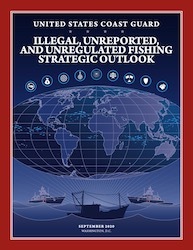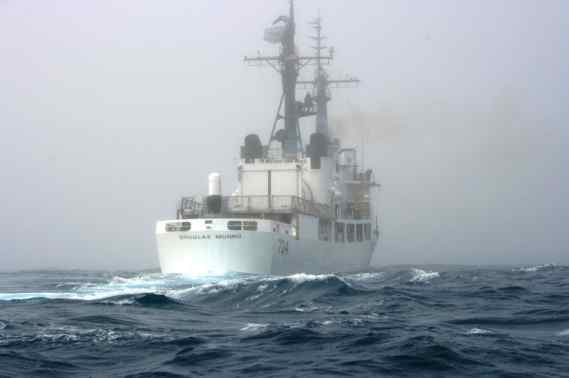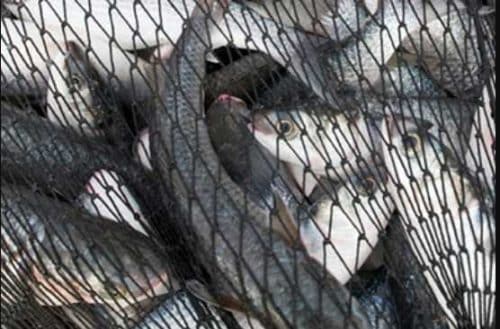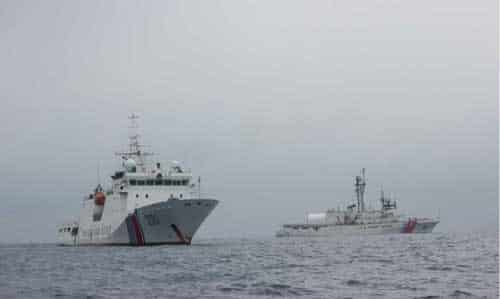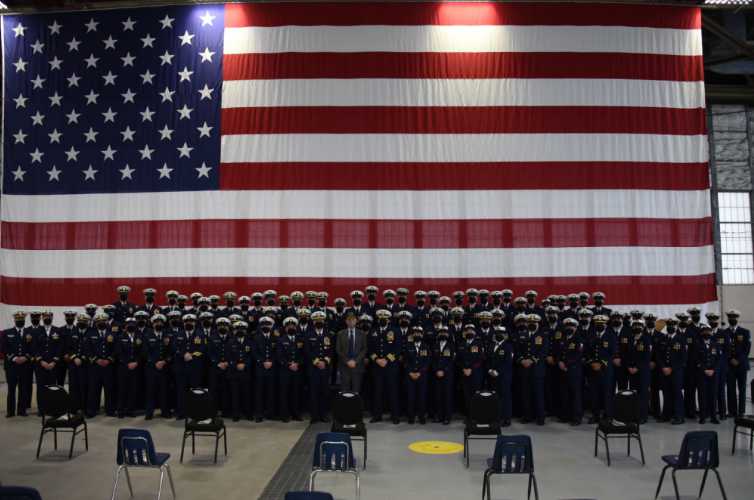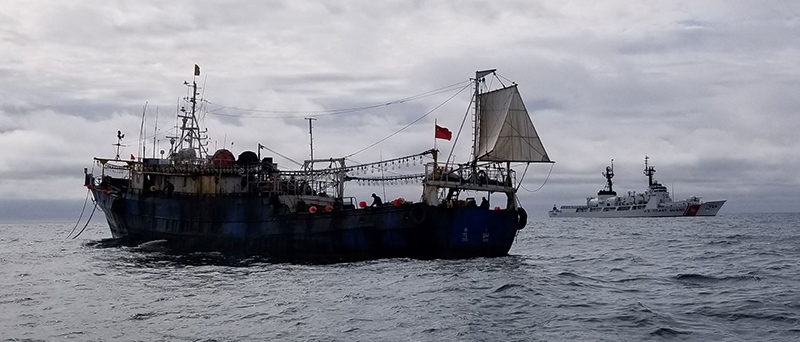 |
| The crew of the Coast Guard Cutter Douglas Munro conducts a boarding of a Chinese fishing vessel |
The crew of the U.S. Coast Guard Cutter Douglas Munro recently completed a nearly two-month patrol, traveling 12,500 miles throughout the North Pacific Ocean, supporting Operation North Pacific Guard, an annual high seas U.S. fisheries international law enforcement operation designed to detect and deter illegal, unreported, and unregulated (IUU) fishing. Supported by a multi-lateral intelligence effort to detect suspicious vessels of interest, the Douglas Munro crew conducted at-sea inspections aboard 11 fishing vessels from four different nations during this year’s operation and found 14 potential violations, including potential serious violations aboard three Chinese flagged squid fishing vessels. Following these boardings, nearly the entire fleet of 31 vessels stopped fishing and fled hundreds of nautical miles west across the Pacific Ocean, avoiding further inspection.
 |
IUU fishing is a pervasive, far reaching security threat that undermines international agreements and fisheries conservation measures, jeopardizes global food security and produces destabilizing effects on vulnerable coastal states. For the past 25 years, North Pacific Rim nations – including Japan, China, Russia, South Korea, Canada, and the United States – partnered to execute Operation North Pacific Guard to uphold international maritime governance and to support legally binding conservation and management measures adopted by several Regional Fisheries Management Organizations (RFMO) in an effort to protect migratory fish stocks on the high seas. Originally focused on targeting illegal high seas driftnet fishing – a practice that uses miles of long gillnets to catch and kill everything in their path, including vulnerable marine mammals, sharks and seabirds – the operation expanded in recent years to counter all forms of IUU fishing in the North Pacific Ocean. Participating nations contribute by providing surface and air patrols and by sharing intelligence that facilitates at-sea inspections targeting IUU fishing activity. The United States Coast Guard leads the operation with a C-130 aircraft and a surface asset with an embarked MH-65 helicopter.
 |
| Global Fishing Watch, a partnership between Google and environmental groups Oceana and SkyTruth, compiled data to highlight fishing activity from 2012 and 2013. |
The operating area for Operation North Pacific Guard operation is vast, encompassing more than three million square miles of high seas area and the convention areas of three RFMOs (North Pacific Fisheries Commission, Western and Central Pacific Fisheries Commission, and North Pacific Anadromous Fisheries Commission) charged with conserving and governing important commercial fisheries, including squid, tuna and salmon. Locating fishing fleets and evaluating whether their operations are illicit or legitimate requires significant efforts and coordination. Global Fishing Watch, a non-governmental organization committed to improving transparency in global fishing, provided valuable information to this year’s operation to highlight suspicious transshipment of fish products at sea and vessel tracking systems that appeared to be spoofed or intentionally manipulated to report false information. Investigation of these reports by the Fishing Agency of Japan and the Canadian Marine Security Operation Center was critical in the identification of numerous vessels of interest. MSOC also provided reconnaissance support, which further helped identify and target potential illicit activity. The Japan Coast Guard and Fisheries and Oceans Canada contributed aircraft resources that detected a potentially stateless vessel.
[content id=”79272″]
“The violations detected and information gathered during this year’s operation highlight the need for robust maritime enforcement presence on the high seas,” said Capt. Jason Brennell, chief of enforcement for the Coast Guard’s Seventeenth District.
To achieve desired operational outcomes, the U.S. Coast Guard relies upon collaboration with like-minded partners, particularly Canada and Japan.
“The westward evasive movement of the fishing fleet indicates and potentially validates suspected illicit activity, and further demonstrates the need for more than a single vessel deployed to compel compliance at sea,” Brennell said. “Increased commitment from all partner countries to provide at-sea enforcement capability, particularly those nations whose vessels are engaged in fishing, is absolutely critical to both the health of world fish stocks and the future success of Operation North Pacific Guard.”
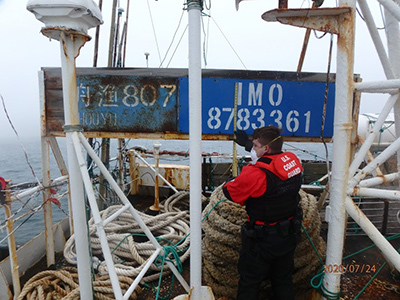 |
All three RFMOs in the Operation North Pacific Guard operation area adopted monitoring, control, and surveillance measures, including high-seas boarding and inspection in various forms. The U.S. views high-seas boarding and inspection authorities in RFMOs to be critically important to monitoring and compelling compliance with regulatory measures. At-sea inspections level the playing field for legitimate operators and challenge IUU fishing bad actors by shining a light on their illicit activities.
In September, the Coast Guard released a new strategy to enhance global safety, security, and stewardship of the maritime domain by combatting IUU fishing. The IUU Fishing Strategic Outlook announces the Coast Guard’s commitment to leading an international effort to combat illegal exploitation of the ocean’s fish stocks and to protect national interests.
[content id=”79272″]
“The Coast Guard’s IUU Fishing Strategic Outlook outlines the service’s efforts to combat the scourge of IUU fishing over the next decade,” said Coast Guard Commandant Adm. Karl L. Schultz. “We are committed to working with our allies and like-minded partners to strengthen the international fisheries enforcement regime and counter this pervasive threat.”
The IUU Fishing Strategic Outlook can be viewed or downloaded here.
-USCG-

